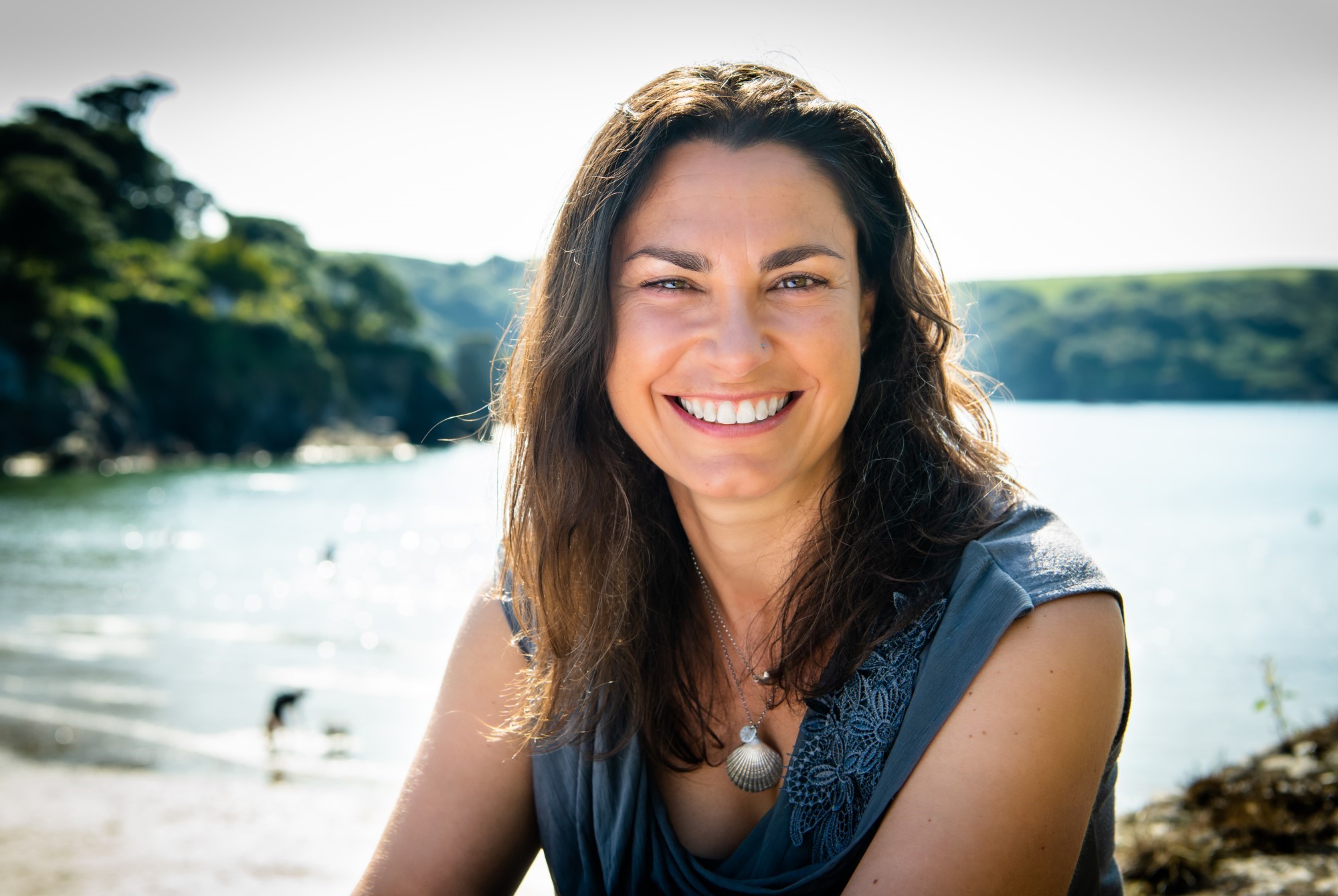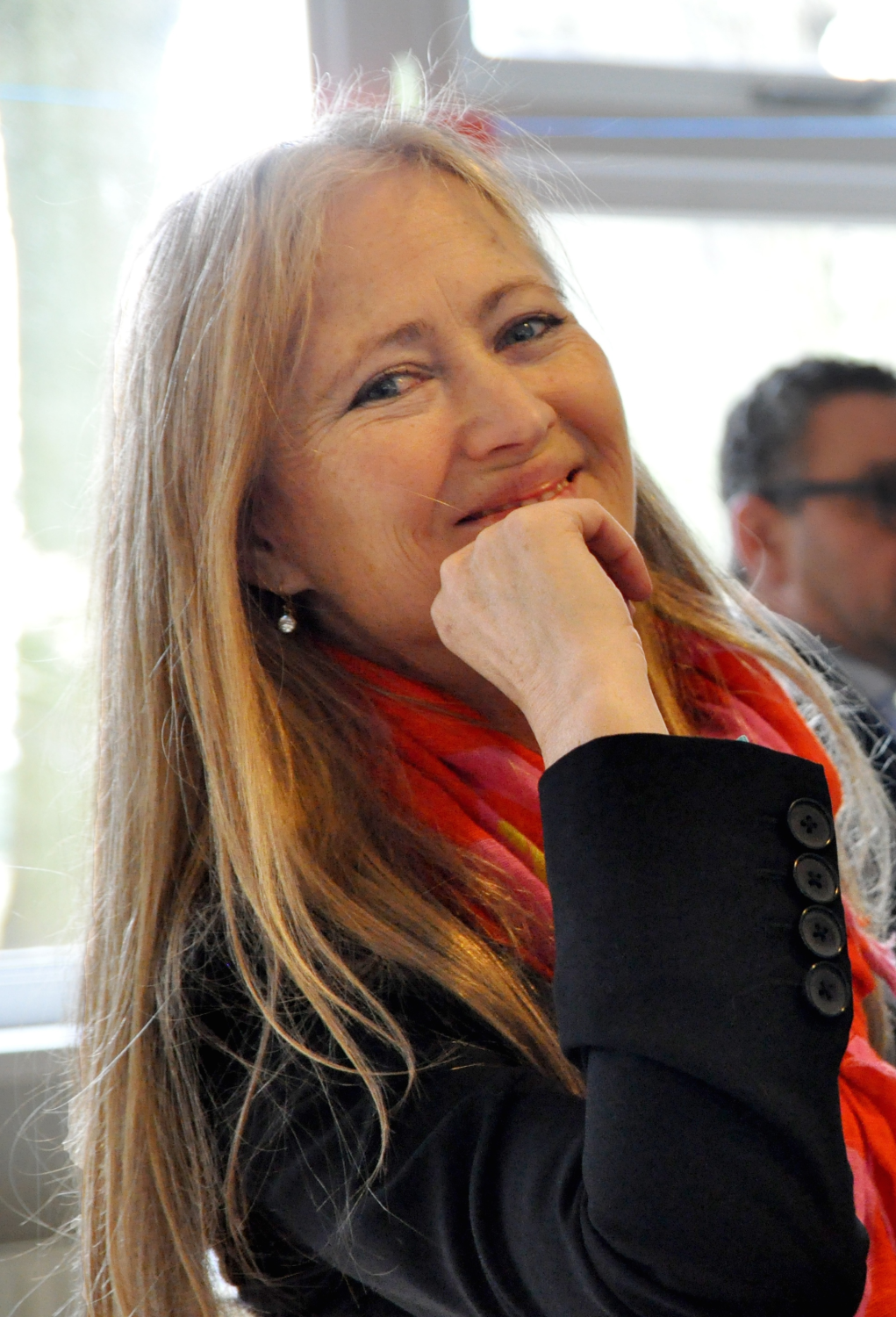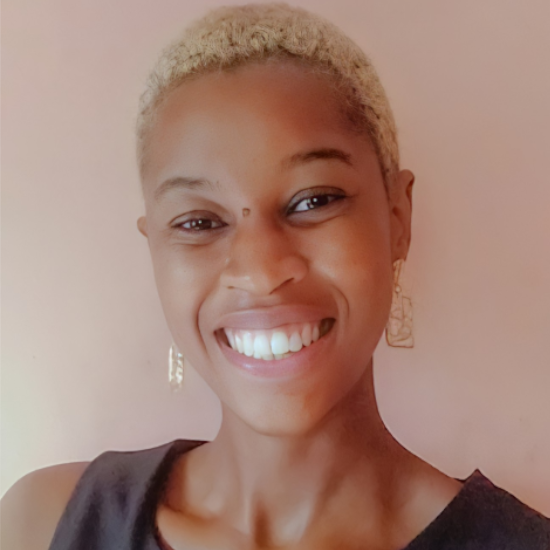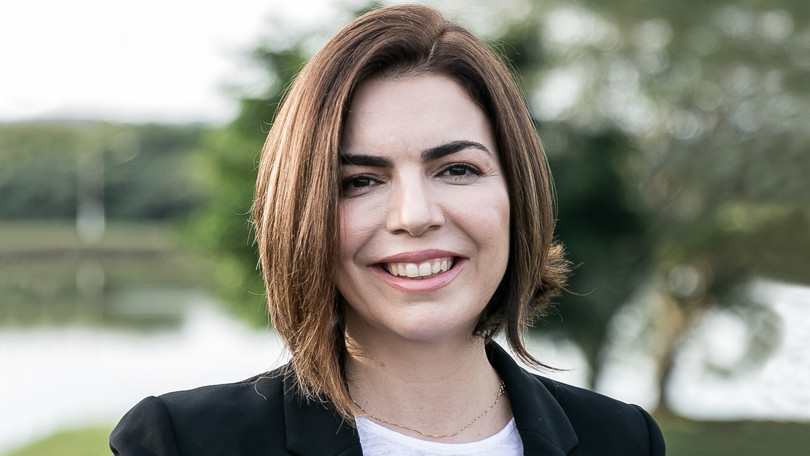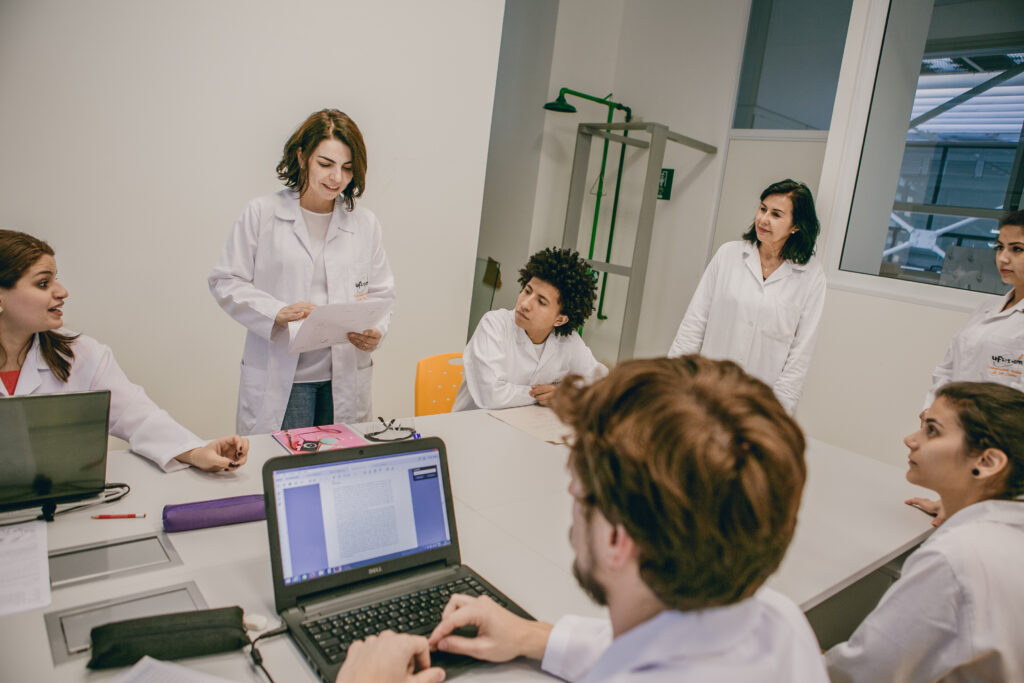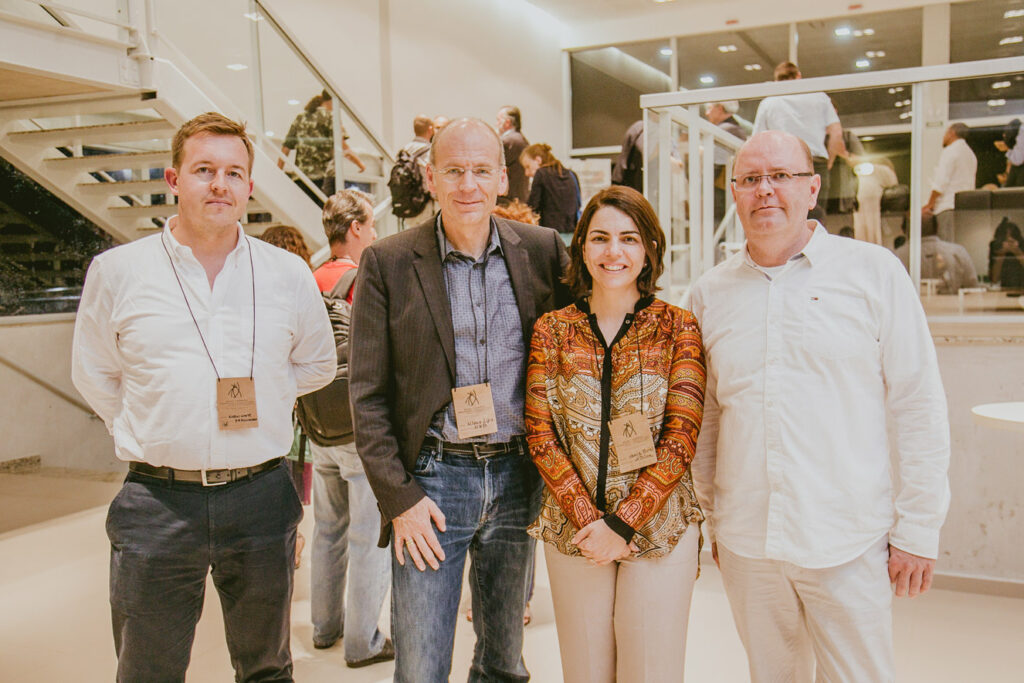"It’s generally a problem of course in gender studies that women’s roles are invisible."
Ms. Sascha Gabizon is the international executive director of
Women Engage for a Common Future (WECF) and long-time Co-Facilitator of the Women's Major Group on the Sustainable Development Goals.
The organization first started in the Netherlands, followed by offices in Germany, France, Georgia and consist of a network of about
150 partners in 50 countries. Ms Gabizon joined the WECF in 1994 to prepare the contribution to the 4th World Women's Conference in Beijing in 1995.
On the international level, the WECF is an active stakeholder within SAICM and the intersessional process towards a more sound chemicals management in the future (“SAICM Beyond 2020”). On the EU-level, the WECF also contributes to decision-making processes and raises awareness on gender aspects in policy areas such as international chemicals management, environment and climate or water sanitation.
Thereby, the WECF focuses on showcasing women-led solutions for a circular economy, in areas such as recycling or health and safety.
The WECF collaborates with the secretariat of the UN Chemicals Conventions (Basel, Rotterdam, Stockholm Conventions) who have established a capacity building programme for member states that involves training on gender and chemicals. Specifically, the work includes scoping studies that analyse concrete examples of the gender dimensions of persistent organic pollutants (POPs) in Kyrgyzstan, Bolivia, Nigeria and Indonesia, as well as the identification of gender-responsive practices and alternatives. Additionally, the WECF accompanies the current discussions on UN level for a legally binding global treaty on plastic pollution, which will be addressed at the UNEA 5.2. Ms. Gabizon has as well been a member on the ISC3 advisory board since its launch.
Ms Gabizon, could you elaborate on what was the notching point for you to get involved in an association such as the WECF? Where did that idea originally come from? In the early 1990s many global conventions were crafted, such as the Convention on Biodiversity (CBD), United Nations Framework Convention on Climate Change (UNFCC) and later the chemicals conventions emerged from processes of the UN Environment Programme. Already two decades before (in 1972) the United Nations Environmental Programme (UNEP) had been founded, which is now almost 50 years ago and the year 2022 will mark UNEP’s 50th anniversary. At that time (in 1990) we noticed that there were very few women who were taking part in contributing to these important, multilateral environmental agreements (MEAs).
In 1992, at the “Rio Earth Summit”, women leaders called out the lack of women participation and representation within the crafting process of the MEAs. Through strong advocacy work by these leaders the lack of representation became more visible. Strong women leaders acted as “bellringers” and came from countries such Brazil, Kenya, and the USA. Rachel Carson’s book “Silent Spring” (1962) was as well a wake up call, documenting the adverse environmental effects caused by the indiscriminate use of pesticides. Ms. Carson did that by observing the health of her chickens and birds. She found out that the DDT insecticide was having negative reproductive health effects on the animals and then also on people.
What was the outcome of the advocacy activities? Eventually, at the Rio 1992 Earth summit, the governments agreed to the establishment of the Women’s Major Group (WMG) and recognized women as one of the nine important groups in society, that are needed to be engaged in achieving sustainable development. The WMG is an official participant in the United Nations processes on Sustainable Development and its role is to facilitate women’s active participation within civil society, information sharing and input into the policy space provided by the United Nations (e.g. participation, speaking, submission of proposals, access to documents, development of sessions).
How would you say can including perspectives of a specific group or category (e.g. gender, religion, ethnicity, disability) add value to such global agreements? Groups in society that have less decision-making power are less visible, their needs and demands are often not well reflected in policies and laws. This includes people with disabilities, migrants, youth and also women, as there is not one country in the world that has achieved gender-equality. When analysing effects of chemicals from a gender perspective it is important to understand the differences between women and men in society, not only the biological differences and how these are differently impacted by chemicals. In my example, women would more often - due to societal roles - work in care jobs, such as childcare or healthcare. Women in care roles can share first-hand insights on impacts of chemicals on health. In our scenario women would be more quickly informed or susceptible to seeing changes in their environment and how this impacts women’s health, men’s health, children’s health, and the health of animals.
Therefore, it is important to purposely invite women to the decision-making table on environmental policies. Since 1992 governments have agreed on these “women and gender constituency” seats, not only in Sustainable Development Processes, but also in the Chemicals, Biodiversity and Climate Conventions. Since then, women have a seat at the table.
And you mentioned the Sustainable Development Goals (SDGs), that are a global framework for development by the year 2030. How would you describe your organisation’s contribution towards achieving the SDGs? The current challenge with the SDGs is, that with a few exceptions we are not on track yet. For example SDG 12, that foresees to ensure sustainable consumption and production patterns including the chemicals related sub target (12.4), which states: “
By 2020, achieve the environmentally sound management of chemicals and all wastes throughout their life cycle, in accordance with agreed international frameworks, and significantly reduce their release to air, water and soil in order to minimize their adverse impacts on human health and the environment”. That target is not achieved yet.
The SDG framework is a useful global programme because it allows civil society organisations such as the WECF to hold their respective governments accountable. Each year at the United Nations, participants, activists and so on can pose the question and ask: Governments, how are you doing in regard to SDG 12? How are you doing on your commitments to the Chemicals Convention and to SAICM? And have you done enough on your national level to really promote the alternatives? Of course, we have seen a lot of positive development, really focused on greening sectors, such as the chemistry sector, or slow shifts towards circular economy processes, but we still, on the other hand, have linear processes in place. The chemical industry and associated sectors will play a very important role in this transformation.
Speaking of your international network and showcasing women led solutions. Do you have some examples of women led innovations? The company Natracare was one of the first companies which started producing non-toxic, eco-friendly and affordable menstrual hygiene products. Natracare has shaken up the menstrual hygiene industry in the UK. But for many girls, eco-friendly sanitation products are unaffordable. Even the conventional ones are too expensive. Also in Germany, the world's fourth-largest economy, and in Holland, we still have menstrual hygiene poverty and for many young girls it’s too expensive to buy menstrual hygiene products.
Therefore, Natracare and other eco-providers also developed affordable, innovative solutions such as reusable menstrual cups. This requires a one-time investment and after that the cost is zero through several years. Additionally, it is environmentally friendly.
I think, looking at the product from a holistic perspective, including the social, gender, and environmental dimensions, like the ISC3 aims to do, is very relevant and is the type of responsible businesses approach we would like to see more in the future.
Right now, we have different menstrual cups and sponges and an entire portfolio of reusable menstrual products on the market, which don’t have the same stigma as during the time of our grandmothers. These kinds of companies explore new opportunities, a new target group, but also help find social, environmental, and transformative solutions.
Ms. Gabizon, you have been active in international law-making processes for many years and very recently returned from the COP26. What are your top three observations this time? From a social justice point of view, my first observation is that this time in Glasgow we had very strong delegation of indigenous women who made their perspective very clear.
My second observation is that gender was among the top most visible topics on the COP26: a very well organised gender and women group, a gender day, the gender action plan for the implementation of the Paris Agreement and the Gender Just Climate Solution Awards have been very prominent activities.
Thirdly, the awareness that gender and climate are intertwined, such as women and girls will be unproportionally negatively affected by climate change, has raised.
Therefore, business as usual is not an option and the chemical industry sector is a major contributor to climate change, as a major player in terms of carbon-intensive industrial and agricultural production and consumer products, but also for tackling climate change. This also leads to another challenge that we face often: How do you make a topic like chemicals interesting for the younger generation? They are very interested in climate policy now, but climate change is also about chemicals, chemicals in plastics, agro-chemicals, and about innovative and green alternatives that are not based on petro-chemicals, which is now coming more into the spotlight.
Another interesting observation is that for the first time, there was a holistic approach on how climate solutions related to all sectors, from water to consumer products, to agriculture, energy, and transport.
In the end, the overarching question remains, that I know you at the ISC3 are discussing as well, which is: How do we get and how to define sustainable chemistry which does not destroy the planet?


